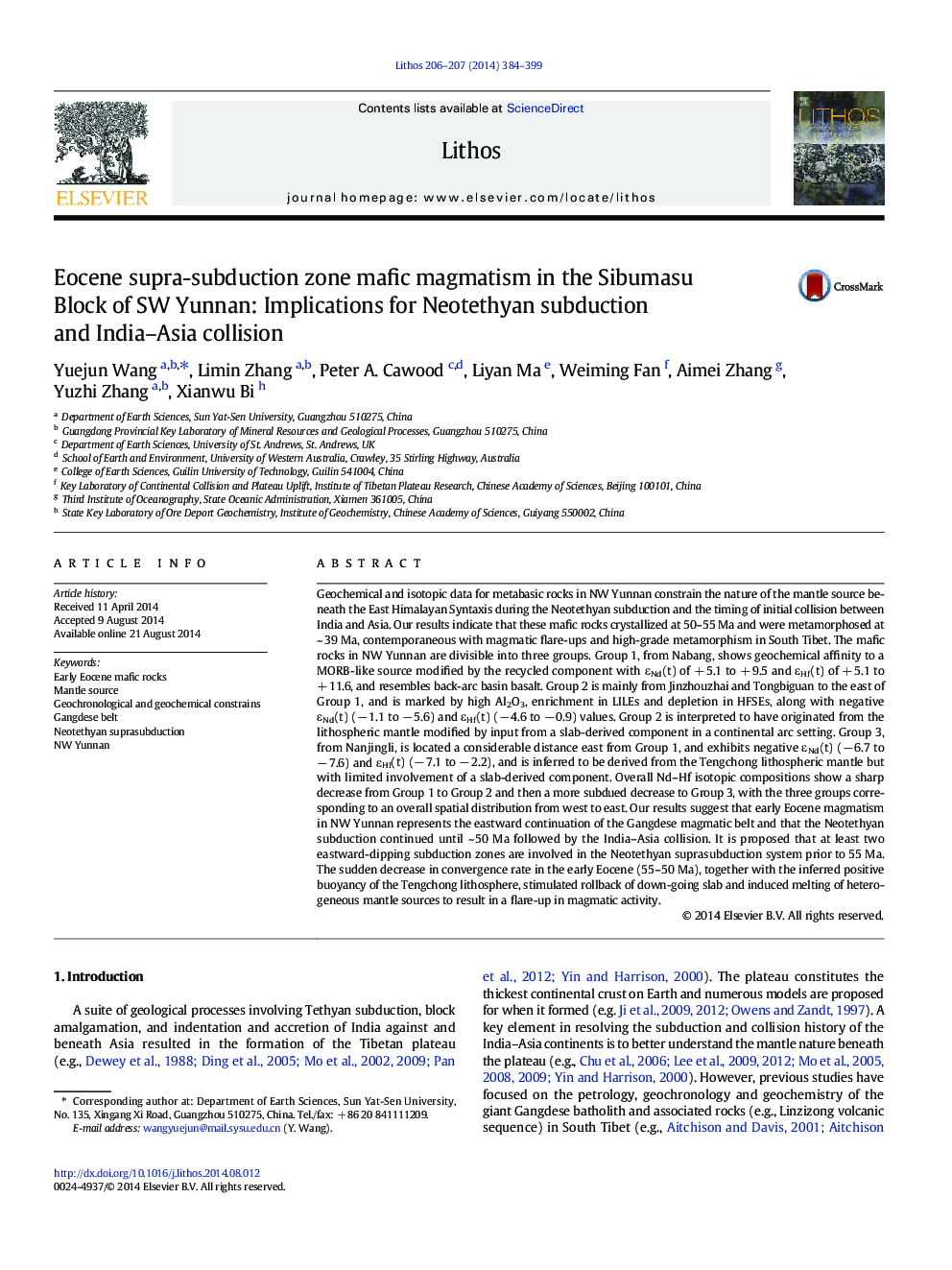| کد مقاله | کد نشریه | سال انتشار | مقاله انگلیسی | نسخه تمام متن |
|---|---|---|---|---|
| 4715959 | 1638672 | 2014 | 16 صفحه PDF | دانلود رایگان |

• Mafic rocks in NW Yunnan crystallized at 55–50 Ma and were metamorphosed at ~ 39 Ma.
• Rocks were generated from the BABB, arc and within-plate tectonic settings.
• An easterly-directed suprasubduction zone presented in NW Yunnan until 50 Ma.
• Early Eocene magmatism in NW Yunnan is comparable to the Gangdese belt.
• Neotethyan slab rollback facilitated melting of various sources and accretion of voluminous magma.
Geochemical and isotopic data for metabasic rocks in NW Yunnan constrain the nature of the mantle source beneath the East Himalayan Syntaxis during the Neotethyan subduction and the timing of initial collision between India and Asia. Our results indicate that these mafic rocks crystallized at 50–55 Ma and were metamorphosed at ~ 39 Ma, contemporaneous with magmatic flare-ups and high-grade metamorphism in South Tibet. The mafic rocks in NW Yunnan are divisible into three groups. Group 1, from Nabang, shows geochemical affinity to a MORB-like source modified by the recycled component with εNd(t) of + 5.1 to + 9.5 and εHf(t) of + 5.1 to + 11.6, and resembles back-arc basin basalt. Group 2 is mainly from Jinzhouzhai and Tongbiguan to the east of Group 1, and is marked by high Al2O3, enrichment in LILEs and depletion in HFSEs, along with negative εNd(t) (− 1.1 to − 5.6) and εHf(t) (− 4.6 to − 0.9) values. Group 2 is interpreted to have originated from the lithospheric mantle modified by input from a slab-derived component in a continental arc setting. Group 3, from Nanjingli, is located a considerable distance east from Group 1, and exhibits negative εNd(t) (− 6.7 to − 7.6) and εHf(t) (− 7.1 to − 2.2), and is inferred to be derived from the Tengchong lithospheric mantle but with limited involvement of a slab-derived component. Overall Nd–Hf isotopic compositions show a sharp decrease from Group 1 to Group 2 and then a more subdued decrease to Group 3, with the three groups corresponding to an overall spatial distribution from west to east. Our results suggest that early Eocene magmatism in NW Yunnan represents the eastward continuation of the Gangdese magmatic belt and that the Neotethyan subduction continued until ~ 50 Ma followed by the India–Asia collision. It is proposed that at least two eastward-dipping subduction zones are involved in the Neotethyan suprasubduction system prior to 55 Ma. The sudden decrease in convergence rate in the early Eocene (55–50 Ma), together with the inferred positive buoyancy of the Tengchong lithosphere, stimulated rollback of down-going slab and induced melting of heterogeneous mantle sources to result in a flare-up in magmatic activity.
Journal: Lithos - Volumes 206–207, October 2014, Pages 384–399